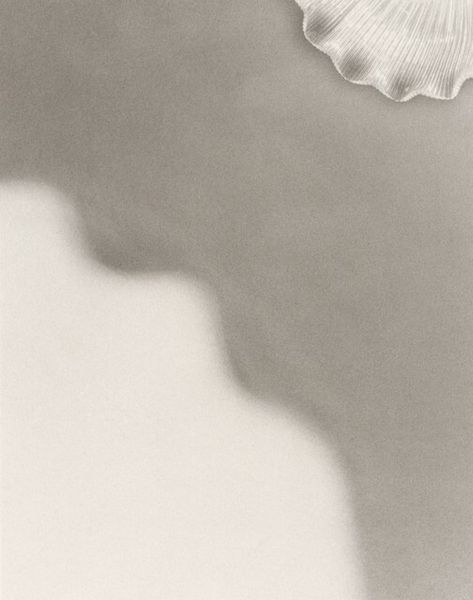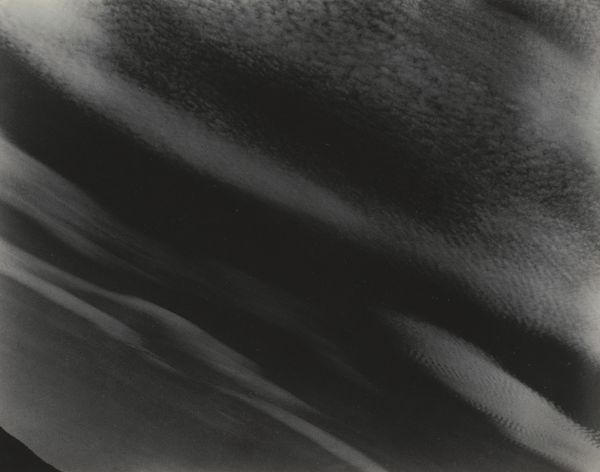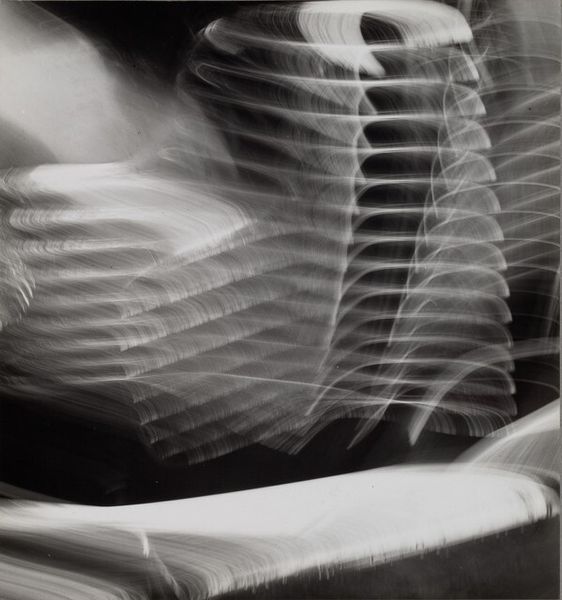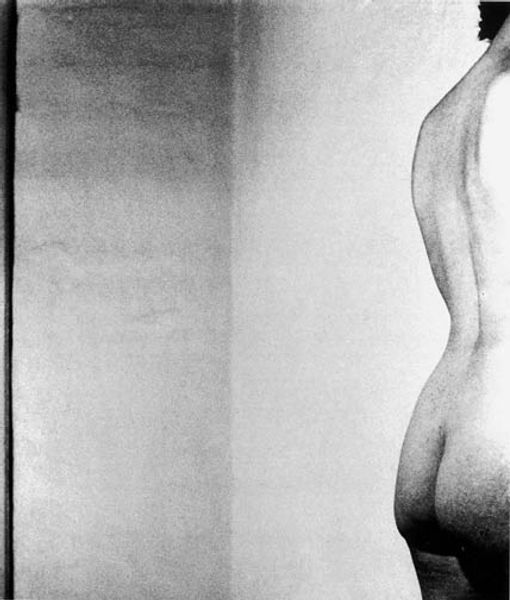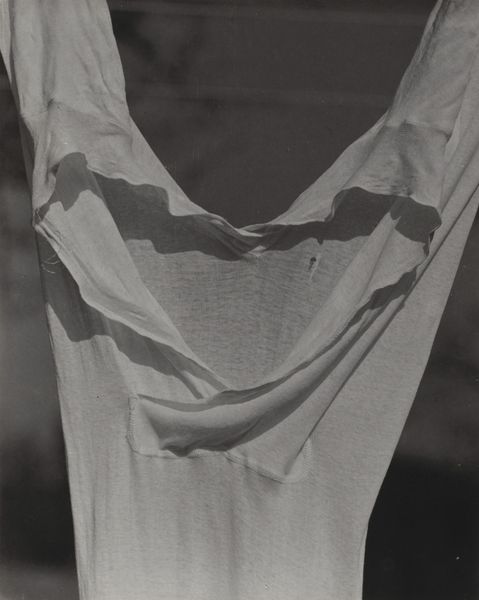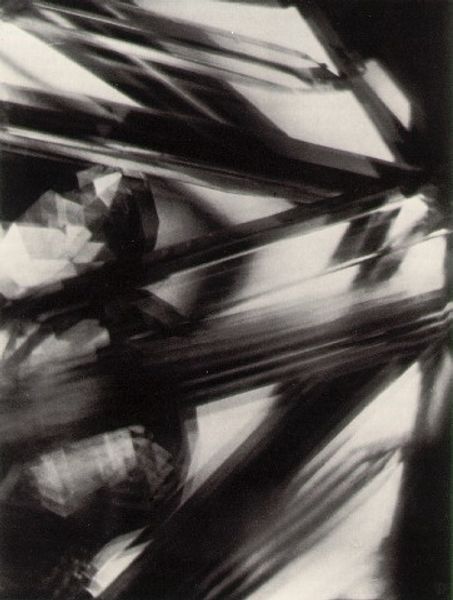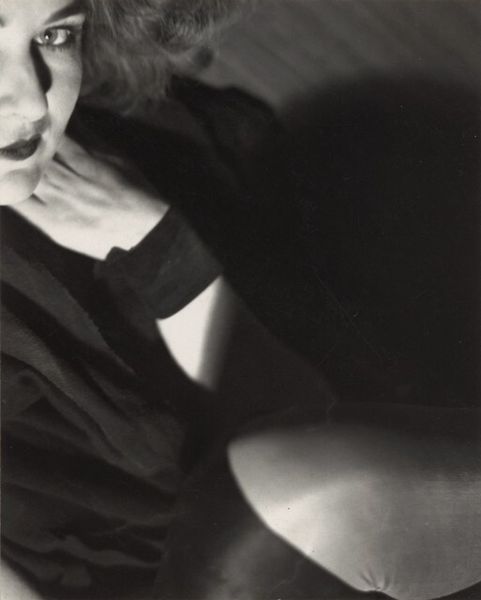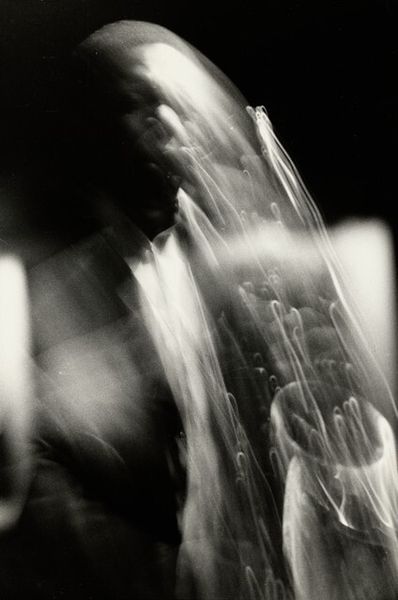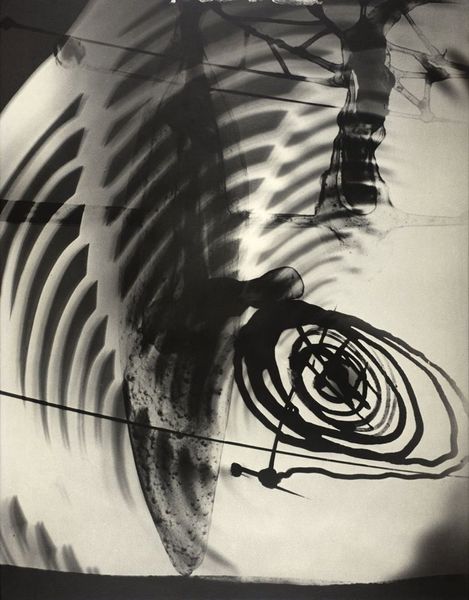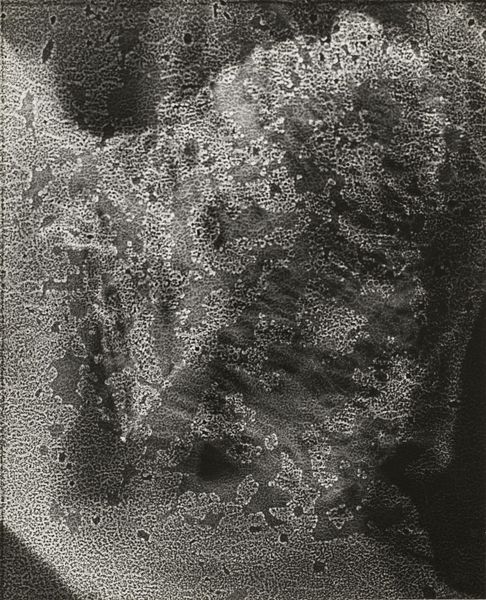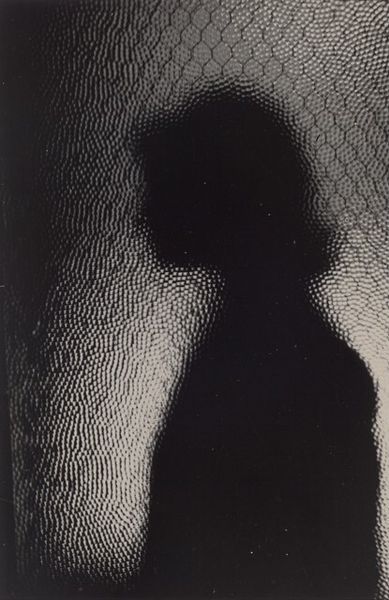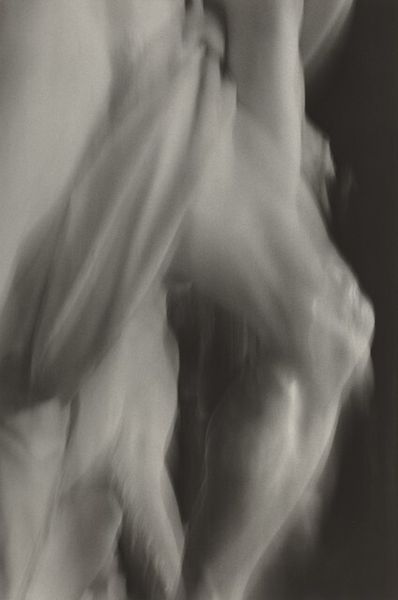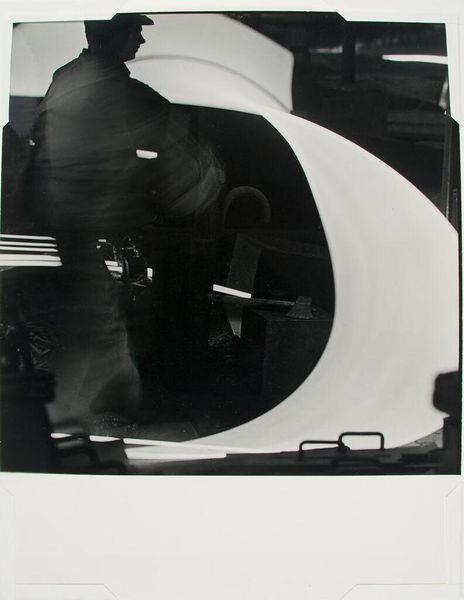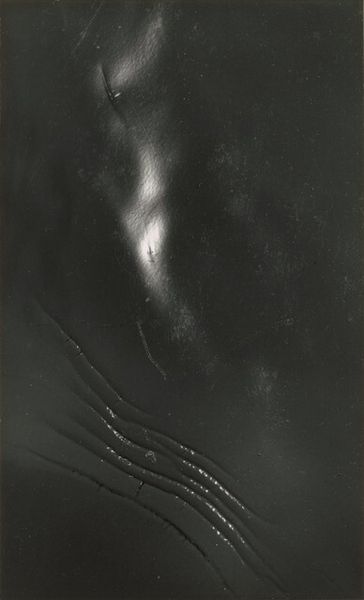
#
neo-dada
#
black-mountain-college
Dimensions: image: 33 × 22.5 cm (13 × 8 7/8 in.) sheet: 35.56 × 27.94 cm (14 × 11 in.)
Copyright: National Gallery of Art: CC0 1.0
Editor: This black and white photograph, "Untitled," made around 1979 by Robert Rauschenberg, is fascinating. It appears to depict reflections on a metallic surface, almost like a distorted landscape. It’s quite abstract, yet I’m drawn to the texture and the play of light. What do you see in this piece, especially concerning its materials and context? Curator: Well, looking through a materialist lens, I see a clear statement about production and labor. This isn’t just a pretty picture; it's a documentation of surfaces crafted through industrial processes. The sleek metal hints at mass production, while the imperfections in the reflection point to human involvement, or the wear from use. It challenges the art world by focusing not on what is depicted, but the very materials and means of creating them and capturing this image. Think about Rauschenberg's background; what does this suggest about his view of what can be considered 'art'? Editor: That's interesting! So you're saying the value lies not just in the aesthetic, but in what the photograph *tells* us about the process behind this vehicle body, perhaps even about American industry at the time? Curator: Exactly. The photograph itself is also an industrial product. What does the choice of photography as a medium – readily reproducible and democratic compared to, say, painting – suggest about Rauschenberg's intent here? Is he trying to elevate the everyday, or critique consumerism, or both? And let’s think about labor. What kind of worker maintains and polishes a surface to such a degree that light produces these strange ripples, reflections? Editor: It does make you wonder about the labor involved in maintaining the object being photographed. Considering that, I look at the photograph and begin thinking of the workers responsible, almost like a visual echo. Curator: Precisely! This photograph provides more than an image; it opens discussion of how physical matter impacts social relations. What you see –the materials that composed this art – invites scrutiny of manufacture, consumption, or work in new ways. Editor: I never thought of it that way before! Now, I’m looking at the picture quite differently, thinking more about what this surface represents as a product of labor and material conditions. Curator: Good. And that, is the first step.
Comments
No comments
Be the first to comment and join the conversation on the ultimate creative platform.
